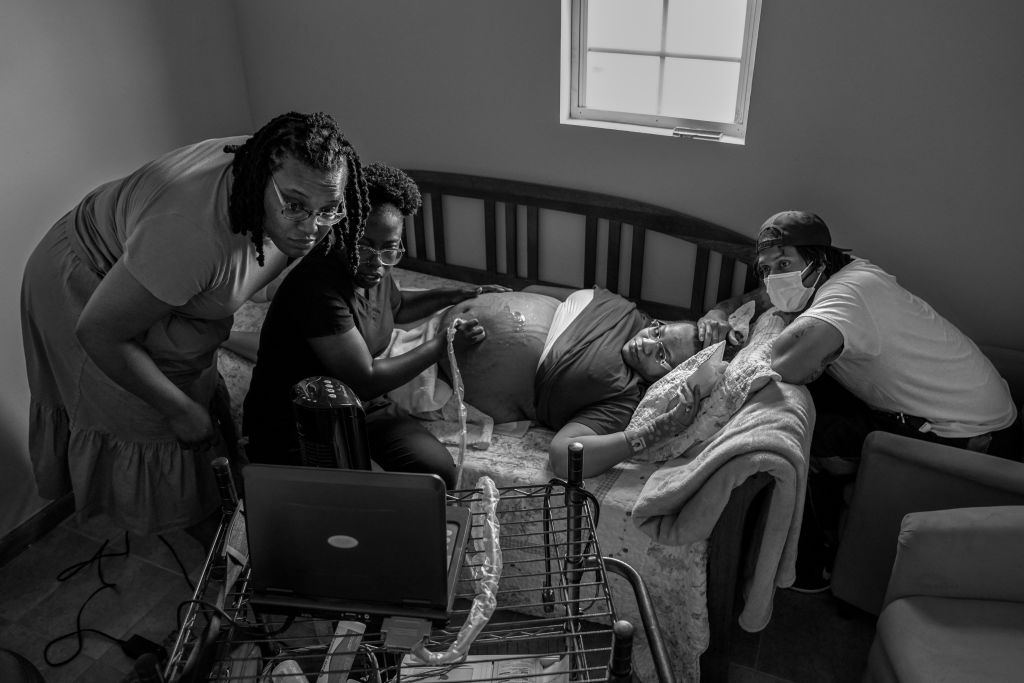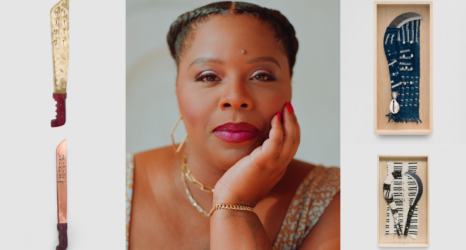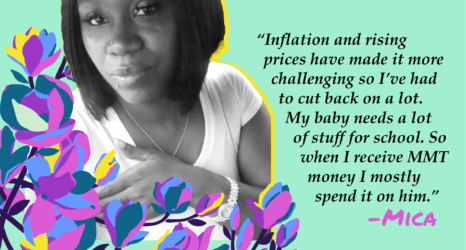
(Jahi Chikwendiu / The Washington Post via Getty Images)
We are currently in the midst of a maternal health crisis. Despite being one of the wealthiest and most highly resourced nations globally, the United States continues to struggle with shockingly high rates of maternal mortality and morbidity. Black women in this country are three times as likely to die of pregnancy-related causes than white women, despite no biological differences between the two socially constructed groups. On top of that, four out of every five pregnancy-related deaths are preventable.
This crisis is a matter of public health and also reflects systemic failures and disparities within our healthcare system.
The good news is we already have something that works: midwives. They have the potential to provide 90 percent of all essential sexual, reproductive, maternal and newborn health care around the world, contributing to 4.3 million lives saved annually by 2035.
The bad news is that some places in the U.S. have made it difficult for midwives to provide the care that we so desperately need.
For us, “Midwives Save Lives” is more than a bumper sticker. The benefits of midwifery care are well-documented, including more personalized care, increased support during labor, continuity of care and more—all of which helps in reducing rates of intervention, including Cesarean sections, episiotomies and the use of forceps or vacuum extraction. Midwifery care leads to better outcomes for both mothers and babies, including faster recovery times, lower rates of preterm birth and a reduced risk of complications. Research has shown that the use of midwives can prevent and reduce maternal and neonatal mortality rates. Midwifery care is absolutely essential in eliminating the racial disparity seen in maternal mortality and morbidity rates.
In the U.S., only 11 percent of births are attended by midwives, and only 2 percent of births take place outside a hospital setting. While we certainly need to increase the number of midwives in the country, one of the biggest problems are the individual states that are making it difficult for midwives to perform the work they have been doing for centuries.
The impact is real—just look at Alabama.
Alabama has the third highest maternal mortality rate in the country. A recent March of Dimes report showed that 34 percent of the state’s counties are maternity care deserts and another 26 percent of counties are considered “low or moderate,” making access to appropriate preventive, prenatal and postpartum care difficult. Alabama also has the country’s highest C-section rate, partially due to the lack of access to continual and culturally competent care. Despite this need for more providers, the state is throwing up roadblocks to those attempting to make a difference.
Birth Sanctuary in Gainesville, Ala., has worked through several hurdles for nearly four years to open a freestanding birth center in an area of the state where maternal health care is scarce. The birth center continues to be held up by archaic and outdated regulations preventing midwives to independently practice.
“Midwives save lives” is only as realistic as legislators, governmental officials, and non-midwives allow. This is especially true as we see a rise in legislative efforts—such as SB 224—that attempt to regulate and control midwifery practice. This particular interference is reminiscent of Alabama public health laws in the 1930s which listed “Midwife Control” as a responsibility of the county health officer, a direct result of the growing medical interference with midwifery at the time, eventually completely eradicating midwives in the state, which played a big role in Alabama solidifying its spot as one of the worst in the nation when it comes to maternal and birth statistics.
Now, in 2024, certified nurse midwives still do not have the ability to independently practice and provide pregnancy services in out-of-hospital settings independently in Alabama. State legislators need to remedy this and show that they understand that the value of midwifery care is more than just a bumper sticker. Incorporating certified nurse midwives into the pregnancy reproductive care landscape as independent providers is a solution we could enact right now to address the dire need for more widespread pregnancy care services. Instead of creating barriers to care, we need to support those who are fighting to provide it.
What’s happening in Alabama is, unfortunately, not unique. When it comes to allowing midwives to autonomously practice, it’s one of three states that still require physician supervision for certified nurse midwives (20 other states require CNMs to establish a contractual practice agreement with a physician). Some states, like Massachusetts, have restrictions on what type of care midwives can provide, or where they can practice. Licensing requirements can vary wildly by state, as well as whether midwives can have the ability to write prescriptions. Policies like the ones in Alabama also show up in hospitals, preventing midwives from providing their full scope of practice. And, despite the evidence of better outcomes, some insurances—both public and private—still will not cover the full range of midwifery care, though it varies by state and policy.
And the kicker? Studies have shown that states with laws that support midwives have better birth outcomes than in states where it’s harder for midwives to provide care. In states where midwives don’t have to spend all of their time pushing up against bureaucracy and antiquated regulations that reek of white supremacy, they have the ability to provide the quality care they’re known for. In states like Alabama, where midwives have to spend their time fighting to do their job, it’s no wonder people are facing higher risks of death.
It simply isn’t fair. It’s not fair to the folks who are pregnant and just wanting a safe birth, and it’s not fair to the midwives who just want to provide quality care and are being prevented from doing so. This country needs birth equity, but we demand birth justice. States like Alabama, North Carolina, Oklahoma, South Dakota and more need to release the legislative holds that still remain on midwifery so we can truly live up to the bumper sticker.
Up next:
U.S. democracy is at a dangerous inflection point—from the demise of abortion rights, to a lack of pay equity and parental leave, to skyrocketing maternal mortality, and attacks on trans health. Left unchecked, these crises will lead to wider gaps in political participation and representation. For 50 years, Ms. has been forging feminist journalism—reporting, rebelling and truth-telling from the front-lines, championing the Equal Rights Amendment, and centering the stories of those most impacted. With all that’s at stake for equality, we are redoubling our commitment for the next 50 years. In turn, we need your help, Support Ms. today with a donation—any amount that is meaningful to you. For as little as $5 each month, you’ll receive the print magazine along with our e-newsletters, action alerts, and invitations to Ms. Studios events and podcasts. We are grateful for your loyalty and ferocity.





